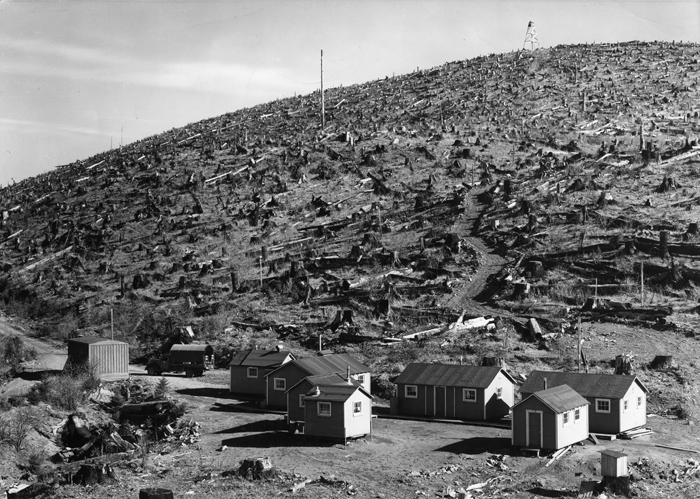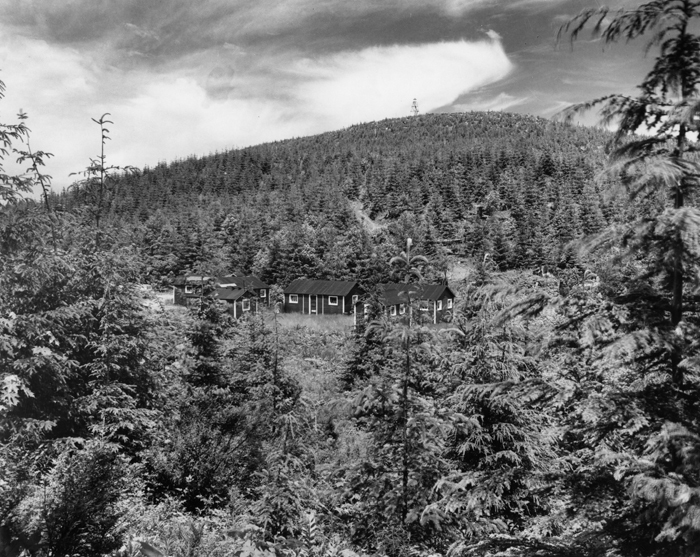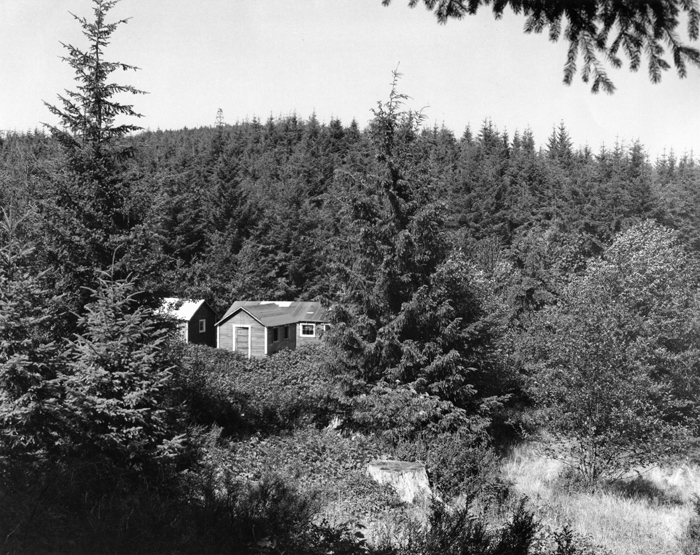FHS has recently launched a web resource showcasing sets of repeat photographs for scientific study and education in the domain of forest and land management in support of the Society’s mission.
Repeat photography is the practice of taking photographs of a specific location at two or more different times. It is a powerful visual resource for scientific study and education in forest and landscape management.
From working forests to wilderness areas, such photographic pairs or sequences can help us understand ecosystem processes, and effects of human and non-human disturbances. They can inform our concepts of sustainability, help us understand the implications of public policy, and assess the results of management decisions.

Weyerhaeuser Tree Farm at Wolf Point in the St. Helens area of Washington in 1940

Weyerhaeuser Tree Farm at Wolf Point in the St. Helens area of Washington in 1950

Weyerhaeuser Tree Farm at Wolf Point in the St. Helens area of Washington in 1960
While many repeat photos of forested land exist, they are scattered in many locations, occur in widely different formats, and are relatively difficult to find. Thus the FHS has aimed at collecting sets of repeat photographs relating to land management and environmental research. View the project at www.repeatphotography.org.
This centralized database will allow users to search for photos by subject keyword, location, date, format, and photographer, among many other characteristics. Additionally, repeat photography sets will be presented with contextual information and individual images will be displayed at detailed resolution for comparison and analysis.
The project is a collaboration between FHS and several other institutional and individual collaborators. By providing an authoritative site on the subject we hope:
- to identify previously unknown repeat photographic pairs and sequences,
- promote the creation of new repeat sets, and
- foster interest in the future uses of repeat photography.
The project leads welcome insights, recommendations, and collaboration in making this valuable historical information more widely available. If you have photos, research ideas, or any other input that might help, please contact Project Photo Archivist Sara Pezzoni at [email protected].
The Repeat Photography Project can be accessed at www.repeatphotography.org.

